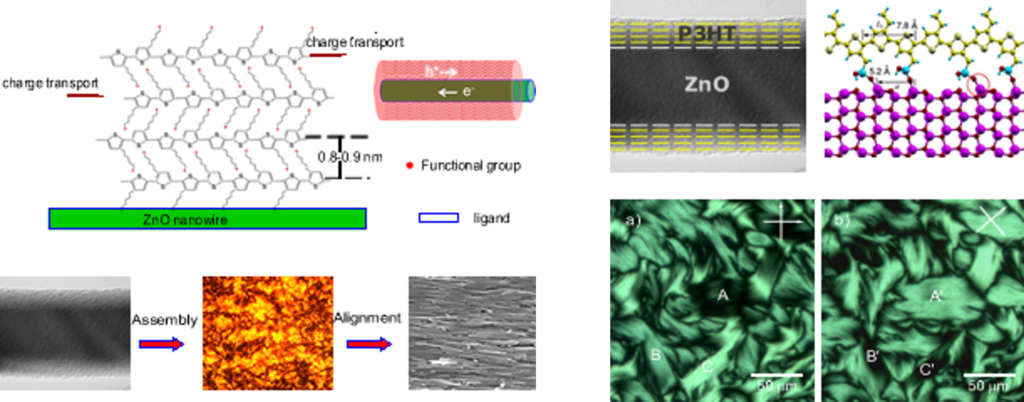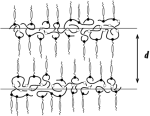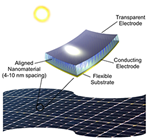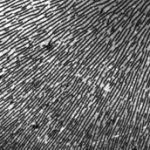The ability to generate vertically aligned morphologies in thin films using magnetic fields enables a range of compelling applications predicated on size or chemo-selective species transport. The scalability of magnetic field processing heightens the prospects for adoption of these methods in the production of useful materials. Our work focuses on three such areas.
Anisotropic ionic conduction in solid polymer electrolytes

LC BCPs featuring a poly(ethylene oxide) (PEO) block may be doped with lithium salts to render the system conductive to lithium ions, making them potential candidates for membranes in lithium-ion batteries. We have demonstrated that field alignment of Li-doped self-assembled cylindrical PEO domains leads to an order of magnitude enhancement of conductivity over non-aligned materials. Conversely, enhancement in lamellar systems is only on the order of 50-100%. We are working to understand the role of near-substrate layers and overall film morphology on the ionic transport properties of these materials.
Vertically aligned single-walled carbon nanotubes (SWNT) for desalination and analytical separations
Polymer nanocomposites may be formed by the magnetic alignment of SWNT sequestered in polymerizable lyotropic precursors. In collaboration with Menachem Elimelech, we have demonstrated this mechanism in a polymer hydrogel and have recently extended this work to non-water permeable materials as well. These results are particularly compelling given the ability of sub-1nm SWNT to function efficiently in desalination by size-exclusion of hydrated salt ions. Likewise, size exclusion using SWNT or MWNT of other diameters permits development of highly selective membranes for analytical separations. We are working to characterize the size-selective transport properties of these materials.

Hybrid core-shell nanowires for ordered bulk heterojunction photovoltaics
There is a pressing need for scalable approaches to fabricating vertically aligned ordered polymer nanocomposites for the development of high efficiency hybrid photovoltaics. In collaboration with Lisa Pfefferle, Andre Taylor and Sohrab Ismail-Beigi, we proposed and demonstrated an approach to such that relies on bottom-up synthesis of core-shell nanowires, their lyotropic self-assembly and large-area alignment by magnetic fields. Core-shell hybrids with transport optimized morphology are prepared by side-on attachment of derivatized polythiophenes onto solvothermally grown, single crystalline ZnO nanowires. Side-on attachment induces ordering of the otherwise non-crystalline polymers at the nanowire interface, favoring efficient hole transport parallel to the heterojunction within the polymer while the single-crystal ZnO cores offer electron conduction without grain-boundary scattering. The core-shell hybrids spontaneously form a nematic phase above a critical volume fraction in suspension. Large-scale alignment can be induced in the nematic state by application of the magnetic field, or shear. This research was enabled by earlier investigations of high yield solvothermal synthesis and lyotropic assembly of ZnO nanowires, as well as magnetic doping and magnetic property characterization of Co/Mn-doped ZnO. Research continues on the systematic characterization of the photovoltaic properties of devices employing the ordered core-shell nanowire motif. One of the more intriguing aspects of this work, from a fundamental perspective, involves the conformational transitions that take place in nanowire-adsorbed polymer chains as a function of the nanowire diameter. Density functional theory calculations support experimental evidence that co-axial arrangements of the polymer backbone with the nanowire can be dictated solely by high nanowire curvature, for side-attached polymer chains. Work along this front continues.





